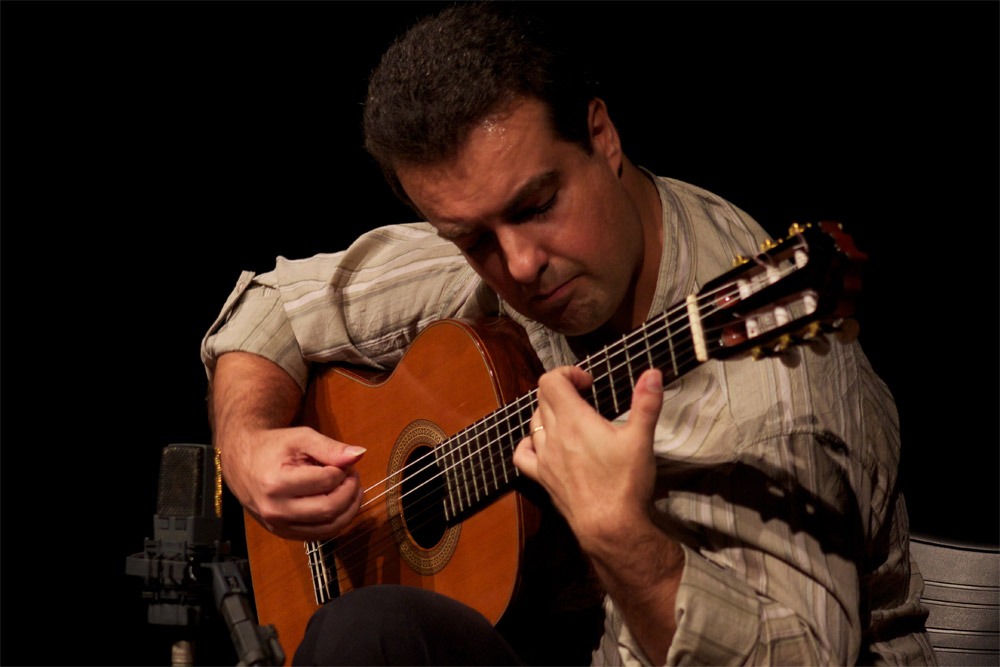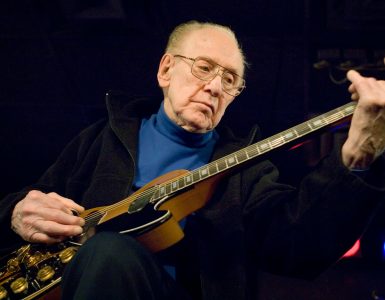As a country with rich culture and tradition, Brazil is a country whose passion stretches basically through each and every aspect of life. Whether it is football or love, the Latino note is always omnipresent in the South American culture, and this most definitely also includes music.
Passionate, fiery, intense – merely some of the words fitting to describe the attitude and vibe of the Brazilian guitar. Although the traditional music includes more groove and percussion-based elements, the guitar ultimately did manage to find its way to the nation’s heart, spawning several individual genres and playing styles and techniques along the way.
Choro Brazilian Guitar
The roots of choro music can be traced all the way back to the 19th century and the Brazil’s cultural capitol of Rio de Janeiro. The word “choro” itself means “cry” in Portuguese, while the music is typically played by a trio consisting of flute, traditional four-stringed instrument called cavaquinho and the guitar.
The first notable publisher choro was released by pianist Ernesto Nazareth at the mere age of 14 in the year of 1878. Another prominent choro composer is Chiquinha Gonzaga and her 1877 polka-choro piece titled “Atraente.” Although choro was initially popular and managed to lay important, some critics might even say crucial foundations of the Brazilian guitar, it quickly lost popularity with the emergence of more popular genres such as samba and bossa nova later on.
Samba Guitar
In the early 1930s, the so called radio era of Brazilian music began with the opening of the very first radio station in Rio de Janeiro. Samba instantly stepped in as one of the most popular and highly demanded genres, helping spread the music vibe and guitar sound across the country. The guitar is considered as one of the traditional instruments for playing samba, along with cavaquinho and percussion instruments such as tamborim. After the World War II, various brass instruments were slowly included as well, such as trumpets, flutes, clarinets and trombones.
Samba guitar features its own set of highly distinctive grooves, rhythms and bar, along with musical scales that help samba to easily stand out among the remaining genres. Even an untrained ear and casual music listeners can recognize the sound of samba and its guitar without too much of a hassle or difficulty. Interestingly enough, there is even a Samba National Day, traditionally celebrated each year on December 2.
Apart from conquering new grounds, setting new standards and entertain crowds around Brazil and the entire continent, samba music also made an impact on numerous musicians, influencing other genres such as the legendary bossa nova to emerge on the music scene of the world. As with all other great music styles, the elements of samba can be heard in every corner around the globe, sometimes in the most unexpected places.
A guitarist called Joao Gilberto (full name Joao Gilberto Prado Pereira de Oliveira) should most definitely be singled out as one of the bossa nova pioneers with his trademark style and several staple Brazilian guitar recordings released during the last century.
Bossa Nova Guitar
Born during the 1950s, bossa nova (meaning “new trend” in Portuguese) took the Latin world by storm throughout both the ‘50s and the ‘60s as a fresh new genre. As a fusion of samba music and jazz, it ultimately became one of the standards, greatly implemented in a wide specter of genres around the globe, becoming a crucial part of jazz music it originally drew influence from.
Standard bossa nova instruments include the piano, various forms of percussions, accompanying strings and the classical guitar as one of the most critical aspects. As far as the bossa nova playing technique is considered, the guitar players typically used the nylon-string axe models, strumming it using the fingerstyle technique (using fingertips, fingernails or specially designed picks attached to the fingers) rather than a pick. Seeing that it was the guitarist who pioneered the entire genre, the guitar and vocal edition of the bossa nova could be considered as its initial form.
Brazilian Rock and Metal Guitar
The fact that Brazil managed to spawn a great number of its own signature genres doesn’t mean that the culture was not open for the influences of other genres and different cultures. Therefore, it shouldn’t come as a surprise that the rock culture, and ultimately the sound of metal music as well, has managed to reach the nation.
The big Brazilian entrance of rock ‘n’ roll occurred fairly early, back in 1957 when Miguel Gustavo released the country’s first rock ‘n’ roll tune titled “Rock and Roll em Copacabana,” reaching No. 52 on the music charts. The song came together only a single year after the sound of rock entered Brazil through Bill Haley’s all-time hit single “Rock Around the Clock.”
Roberto Carlos is yet another prominent rock ‘n’ roll figure in Brazil, but it comes as an interesting fact that possibly the greatest international success was accomplished by a metal band. Founded in 1984 in Belo Horizonte, thrash metal four-piece Sepultura became the most critically acclaimed rock music act in the history of Brazil. With over 20 million records sold around the world, the group has cemented its place among the metal greats, implementing the elements of traditional tribal Brazil music in their songs to a great extent. Guitarists Max Cavalera and Andreas Kisser are unanimously considered as some of the genre’s finest axemen.
But in all fairness, it is the acoustic guitar performers that count the most in Brazil, as the instrument is now rooted deep in the nation’s tradition. So to just mention some of the best acoustic axeman the country has to offer, we would clearly have to list the likes of Raphael Rabello, Yamandu Costa, Paulinho Nogueira, Turibio Santos, the Assad Brothers and many others.
Regardless of the style, the essence of Brazilian guitar remains the same, with the passion, form and pure artistic expression always remaining as the most crucial aspect for every player. It remains alive and well to this very day, not only as an underlying element of other genres, but through the music of its very own young upcoming guitar masters.












Add comment